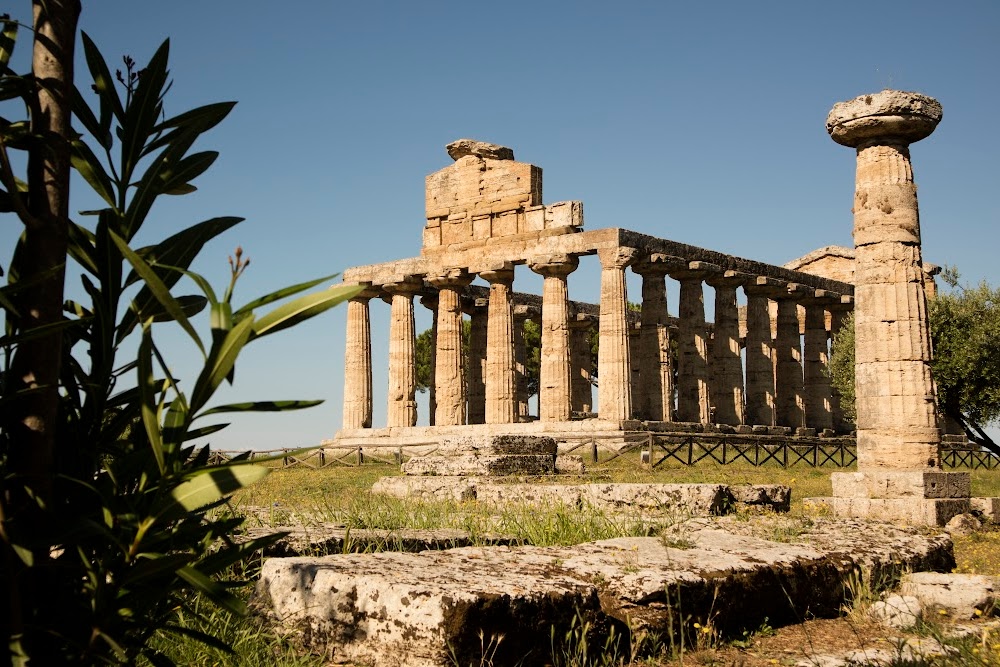Journey through humanity’s shared history by visiting UNESCO World Heritage Sites, places distinguished for their cultural, historical, or scientific significance. This guide will navigate you through mesmerizing sites, offer travel advice, an d ensure a rich and enlightening travel experience.
10 Recommendations of UNESCO World
Heritage Sites Locations to Travel To
1. Great Barrier Reef, Australia: Experience the world’s largest coral reef system.
The Great Barrier Reef, Australia, a UNESCO World Heritage Site, is the world’s largest coral reef system, offering a biodiversity haven with over 2,900 individual reefs and 900 islands. It’s a marine life sanctuary, home to vibrant coral, diverse fish, sharks, and turtles.
Snorkeling and scuba diving here provide a surreal underwater spectacle, making it a sought-after destination for marine enthusiasts. Its pristine beauty and significant ecological value make the Great Barrier Reef an outstanding testament to nature’s splendor, worthy of exploration.
2. Machu Picchu, Peru: Explore the Incan citadel set in the Andes Mountains.
Machu Picchu, Peru, a revered UNESCO World Heritage Site, is an ancient Incan city set high in the Andes Mountains. Known for its archaeological significance and panoramic mountain views, it’s a window into the Incan civilization. The well-preserved ruins, intricate stone constructions, and the mystery surrounding its purpose captivate visitors.
Nestled amid lush greenery and offering a spiritual retreat, it’s a testament to Incan engineering and a sanctuary of ancient culture. Hiking the Inca Trail to reach it is a rewarding journey, unveiling breathtaking sceneries. Machu Picchu is not just a historical site but an emblem of enduring ancient wisdom and natural beauty.
3. Great Wall of China, China: Trek along the monumental marvel of ancient defense.
The Great Wall of China, a UNESCO World Heritage Site, stands as a monumental feat of ancient engineering stretching over 13,000 miles.
Constructed across several dynasties, it showcases China’s historical military prowess and architectural ingenuity. The wall winds through varying terrains, offering spectacular vistas of China’s diverse landscapes.
Visitors can walk along its preserved sections, feeling the whispers of history underfoot while gazing upon rolling hills and rugged mountains. Beyond its architectural marvel, it’s a symbol of China’s enduring strength and cultural heritage. The Great Wall invites explorers to step back in time, experiencing a rich tapestry of history amid natural grandeur.
4. Angkor Wat, Cambodia: Wander through the world’s largest religious monument.
Angkor Wat, a UNESCO World Heritage Site in Cambodia, is a majestic temple complex epitomizing the zenith of Khmer architecture and artistry. Initially a Hindu temple, it gradually transformed into a Buddhist site, embodying a confluence of religious and cultural heritage. Its intricately carved stone structures, expansive moat, and celestial alignment reflect a harmonious balance between spirituality, architectural genius, and the natural world.
Walking amidst the ancient ruins, visitors are transported to a bygone era, reveling in the mystical aura that envelops the temple grounds. Angkor Wat is a timeless journey into Cambodia’s ancient civilization, offering a profound exploration of architectural grandeur and spiritual essence.
5. Galápagos Islands, Ecuador: Discover unique wildlife and pristine landscapes.
The Galápagos Islands, a UNESCO World Heritage Site in Ecuador, is a living museum of evolution, where unique wildlife thrives in a pristine, diverse habitat. The archipelago’s isolation has given rise to distinct species, making it a seminal site for biological research and a real-life showcase of evolution. Visitors encounter giant tortoises, blue-footed boobies, and marine iguanas in close proximity.
The islands’ volcanic landscapes and clear waters offer breathtaking views, while its conservation efforts set a global example. The Galápagos is not just a travel destination, but an enlightening expedition into nature’s wonders, offering a firsthand experience of life’s incredible diversity and adaptability.
6. Petra, Jordan: Unveil the archaeological and historical city carved into rose-red cliffs.
Petra, Jordan, a UNESCO World Heritage Site, is a mesmerizing archaeological city carved into the rose-red cliffs of southern Jordan. Known as the “Rose City” due to its color, Petra reveals the advanced craftsmanship and architectural brilliance of the Nabataeans. The city’s iconic structure, Al Khazneh, wel comes visitors with its majestic facade.
Walking through the Siq, a narrow gorge leading into Petra, unveils a historic journey amidst rock-cut tombs, temples, and intricate carvings. Petra is not merely a site, but a narrative of ancient civilization, offering a profound exploration of Jordan’s rich historical and cultural tapestry amidst a dramatic desert landscape.
7. Serengeti National Park, Tanzania: Witness the Great Migration in this iconic ecosystem.
Serengeti National Park, Tanzania, a UNESCO World Heritage Site, is an epitome of wilderness, offering an unadulterated window in to Africa’s vibrant ecosystem. Known for the iconic Great Migration, it hosts a dramatic movement of over a million wildebeest and zebra across its vast plains. The park is a sanctuary for a remarkable diversity of wildlife, including the Big Five (lion, elephant, buffalo, leopard, and rhinoceros).
Its expansive savannahs, acacia woodlands, and rivers provide a scenic backdrop to nature’s theatre. Visitors to the Serengeti experience the raw beauty and the circle of life in one of the world’s most celebrated wildlife destinations, making it a quintessential safari adventure.
8. Historic Center of Rome, Italy: Step back in time in the Eternal City.
The Historic Center of Rome, Italy, a UNESCO World Heritage Site, is a living tapestry of history, architecture, and culture. This ancient city core encapsulates Rome’s rich historical timeline from Roman, Medieval, Renaissance to Baroque eras. Iconic landmarks like the Colosseum, Roman Forum, and the Pantheon narrate tales of bygone civilizations, while majestic squares and fountains, like Piazza Navona and Trevi Fountain, showcase Baroque artistry.
The Vatican City within, home to St. Peter’s Basilica and the Sistine Chapel, adds a spiritual dimension. Strolling through Rome’s historic center is a journey through time, offering a profound exploration of human civilization’s architectural and cultural legacy amidst the backdrop of everyday Roman life.
9. Pyramids of Giza, Egypt: Marvel at the last of the original Seven Wonders of the World.
The Pyramids of Giza, Egypt, a UNESCO World Heritage Site, are awe-inspiring ancient marvels standing at the crossroads of history and mystery. These iconic structures, including the Great Pyramid of Giza, epitomize the pinnacle of ancient Egyptian architectural genius and the profound cultural significance of the Pharaohs’ era. The enigmatic Sphinx nearby adds to the site’s mystique.
Visitors to Giza are transported back to ancient Egypt, amidst the grandeur of these timeless monuments. The Pyramids of Giza are not merely tombs, but a testament to human endeavor and a gateway to exploring the enigmatic allure of Egypt’s ancient civilization amidst the vast desert landscape.
10. Yellowstone National Park, USA: Explore diverse wildlife and geological wonders.
Yellowstone National Park, a UNESCO World Heritage Site in the United States, is a vast natural wonderland known for its geothermal features, majestic landscapes, and diverse wildlife. Home to the world’s largest collection of geysers, including the iconic Old Faithful, it’s a geothermal marvel.
The park is a sanctuary for an array of wildlife such as grizzly bears, wolves, and herds of bison and elk, making it a prime location for wildlife viewing. With its scenic lakes, thundering waterfalls, and verdant forests, Yellowstone offers an unparalleled outdoor adventure. Its natural beauty and ecological significance make it a cherished destination for nature enthusiasts, offering a profound encounter with the wild heart of North America.
Recommendations for Traveling to UNESCO World Heritage Sites:
Thoroughly research the destination before your visit. Many UNESCO sites have specific rules for visitors to preserve the integrity of the locations. Respect local traditions and guidelines, and consider hiring a local guide for a more in-depth experience.
Activities You Can Do in UNESCO World Heritage Sites:
Activities vary vastly: snorkeling in the Great Barrier Reef, hiking the trails of Machu Picchu, taking a historical tour of the pyramids in Egypt, or observing the unique wildlife in the Galápagos Islands. Ensure you’re aware of permissible activities to conserve the sites.
Packing Tips for Going to UNESCO World Heritage Sites:
Pack appropriately for the climate and activities. Carry eco-friendly products to minimize your environmental footprint. Consider lightweight, moisture-wicking clothing, and durable, comfortable footwear suitable for exploration.
Recommendations for Food and Drink at UNESCO World Heritage Sites:
Often, UNESCO sites are located near communities with rich culinary traditions. In Italy, savor traditional Roman dishes. In Jordan, enjoy authentic Middle Eastern cuisine. Always prioritize local and sustainably sourced food and beverages.
Travel Gear to Bring to UNESCO World Heritage Sites:
Invest in a durable, eco-friendly backpack, a high-quality reusable water bottle, and portable eco-friendly snacks. A good camera is essential for capturing the beauty and grandeur of these world wonders. Sun protection and suitable travel attire are also crucial.
Pro-Tip from the Editor:
When visiting UNESCO World Heritage Sites, take the time to understand the historical, cultural, or natural significance of the location. This deeper appreciation will enhance your visit, transforming it from a sightseeing trip into a meaningful, enriching experience. Engage with local communities, as their insights and stories add a valuable dimension to your exploration, creating memories that will last a lifetime.






